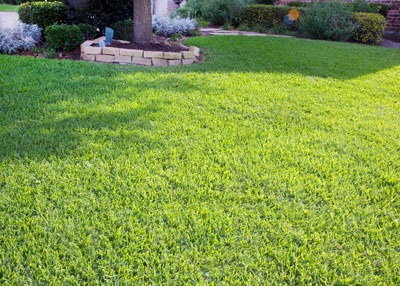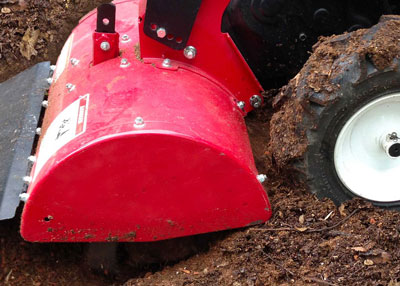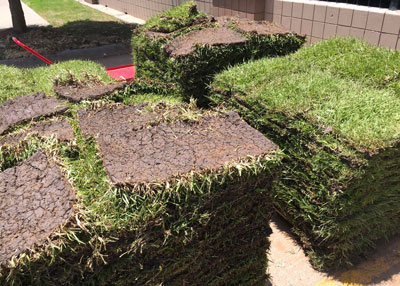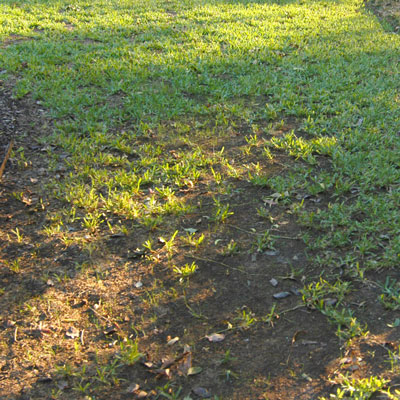New Lawns Start Now
Mid-May is prime time for starting new turfgrass. Soils have warmed enough that grass roots will grow well, yet it’s not hot yet, so it isn’t difficult to keep the new grass alive. In the chance that you either have a new house or a spot at the old place where you need some new grass, let’s talk about the things you’ll need to do to ensure its success.

I had an outstanding turf professor in college who drilled home the fact that soil preparation for planting a new lawn is exactly the same whether you are planting sod or seed. I’ve thought about Dr. Miller’s comment hundreds of times as I’ve seen people trying to overseed very tiny bermuda seed onto a lawn or throw out St. Augustine sod on top of existing turfgrass without any bed preparation at all. His mind would have exploded.
Start by killing all existing vegetation. This is your one chance to get rid of existing dallisgrass, for example, by spraying with a glyphosate-only herbicide. (Glyphosates are not active within the soil, so they leave no residue to harm subsequent plantings.) That same material will control almost any other existing weeds and turfgrass. Give it 10 to 15 days to do its work, then mow the lawn closely to remove all the stubble.

Use a rear-tine rototiller to pulverize the soil to a depth of 4 to 6 inches. Go over the area a couple of times to be sure it’s all uniformly blended. There is no need to incorporate any organic matter or fertilizer into the soil. They would all be dissipated too quickly anyway. The grass will be a permanent addition. It’s going to have to adjust to the soil you have for it.
Rake out all rocks, roots and building debris. Use your garden rake turned upside-down to smooth to the final grade. You’re not trying to level the area, but to establish a grade that will ensure good drainage away from your home. If that grade isn’t quickly obvious, invest a few dollars in a string level at the hardware store. They’ll explain how to use it or you can find help on YouTube.
Hopefully you already know the type of grass you’ll be planting. Bermuda is good for high-traffic areas, also for drought tolerance. St. Augustine handles shade better than any other grass, although it grows best in full sun. It is the most dominant grass, so know that it will crowd into other grasses when planted nearby. There are some great zoysias now, but they’re slow to cover and expensive to plant as solid sod. Buffalograss can’t hold its own. Bermuda invades it and will crowd it out within just a couple of years.

If you’re planting from sod contact your turfgrass vendor and find out when it will be dug and brought in. If at all possible, arrange for an early morning delivery to get it while it’s still fresh. Have a team on call to help lay it in place. Avoid making ruts as you carry it onto the site and put the pieces in place snugly, so your mower won’t drop into the voids later.
Water it within 30 minutes to keep it green and growing. Use a hose with a water breaker to keep from soaking areas where you’re still planting new sod. Mow the new grass as soon as it reaches the recommended mowing height, usually in 7 to 10 days. Fertilize it at half the recommended rate after the second mowing.
“Common” bermudagrass is planted from seed. Combine it with equal amounts (by weight) of corn meal from the grocery to help you distribute it evenly at the rate of 2 to 4 pounds of seed per 1,000 square feet.
Use a hand-held seeder and sow half of it going in an east-west direction and the other half going north-south. That will help you avoid gaps and misses. If you have flower or groundcover beds, have someone hold a large piece of cardboard to serve as a baffle so the seed won’t go where you don’t want it.
Water the new seedings for 5 minutes daily for the first 10 to 12 days, then cut back to one time daily. Obviously, that would need to be modified should rain pass through.
You’re likely to have robust weeds show up in your new lawn, especially if there has never been turfgrass there before. Johnsongrass is particularly alarming because of its upright habit, but the truth is, mowing alone will get rid of it within the first couple of months. Some broadleafed weeds, however, may be able to take hold and grow. You can spot-treat those with a trigger bottle of a 2,4-D product, but apply the herbicide only to the specific weed. Wait for general whole-lawn applications until your new turf has gone through its first winter. That also applies to the application of pre-emergent granules at the end of August.

How to get grass to grow in the shade…
The one warning I want to give as we finish this little shortcourse on starting new turf has to do with getting grass to grow in the shade. It’s the question I’m asked the most often.
I see so many people trying St. Augustine beneath large trees time after time, muttering as they do, “I’ll water it more so it can compete.” Or “Maybe it needs more fertilizer. The trees must be using up all the nutrients.”
Sometimes my friends even ask me to stop by. There they are, looking me square in the eye saying, “I’m sure it has enough sunlight.” And then, when I when I look at the setting, it’s obvious that the grass is starving for sun. St. Augustine must have 6 hours of direct summer sun daily in order to survive, more if you expect it to thrive. You can’t make up for lack of sunlight with water or fertilizer. That’s why all sod farms are out in full sun.
The final proof: You know it’s the shade if the closer you get to the trunk of the tree (heaviest shade), the thinner the grass gets.
